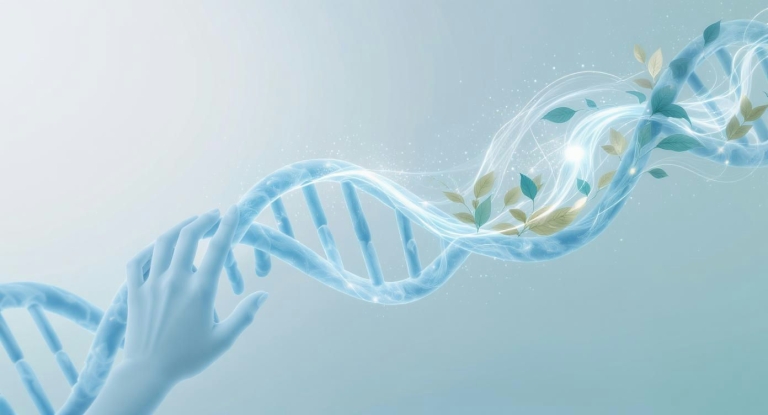Rosacea Unveiled: Understanding Triggers, Treatments, and Daily Management
Rosacea Unveiled: Understanding Triggers, Treatments, and Daily Management
Executive Summary
Rosacea is a chronic inflammatory skin condition affecting approximately 2 million Canadians, characterized by facial redness, visible blood vessels, and sometimes small red bumps. While there’s no permanent cure, effective management through trigger identification, proper medical treatment, and consistent skincare can significantly improve symptoms and quality of life.
At Care& Family Health, our nurse practitioners provide personalized rosacea care with unrushed appointments that allow for comprehensive assessment and ongoing management.
Living with rosacea can feel like navigating an unpredictable landscape where your skin reacts to seemingly harmless environmental factors, foods, and even emotions. This chronic skin condition, characterized by facial redness, visible blood vessels, and sometimes small, red, pus-filled bumps, affects approximately 2 million Canadians, with many cases going undiagnosed or misinterpreted as temporary flushing, acne, or allergic reactions.
At Care& Family Health, we regularly meet Toronto residents who have struggled for years with rosacea symptoms before seeking proper diagnosis and treatment. Unlike acne, which primarily affects oil glands and can occur anywhere on the body, rosacea is centered on the face and involves inflammation of blood vessels just beneath the skin’s surface. Understanding this distinction is crucial for effective management.
This comprehensive guide aims to demystify rosacea—exploring its triggers, evidence-based treatments, and daily care routines that can help maintain clearer, calmer skin. Whether you’ve recently been diagnosed or have been managing this condition for years, gaining deeper insight into rosacea can transform your approach to skincare and overall well-being.
Table of Contents
- Understanding Rosacea: Beyond the Redness
- Identifying Your Rosacea Triggers
- Evidence-Based Treatment Options
- Daily Skincare Strategies for Rosacea Management
- Lifestyle Modifications for Rosacea Management
- When to Seek Professional Help
- The Psychological Impact of Rosacea
- Living Well with Rosacea: Long-term Management
- Frequently Asked Questions About Rosacea
Understanding Rosacea: Beyond the Redness
Rosacea is more complex than meets the eye. This inflammatory skin condition typically appears between ages 30-50 and affects all skin types, though it’s most visible in those with fair skin. While the exact cause remains unknown, research suggests a combination of genetic predisposition, immune system irregularities, environmental factors, and even microscopic skin mites (Demodex folliculorum) may contribute to its development.
The Four Subtypes of Rosacea
Contrary to popular belief, rosacea isn’t a one-size-fits-all condition. Medical clinics in Toronto and worldwide recognize four distinct subtypes:
- Erythematotelangiectatic Rosacea: Characterized by persistent redness, flushing, and visible blood vessels, particularly across the cheeks, nose, and forehead.
- Papulopustular Rosacea: Presents with acne-like breakouts, redness, and visible blood vessels. Unlike acne, these bumps contain no bacteria and don’t typically respond to traditional acne treatments.
- Phymatous Rosacea: A rarer subtype causing skin thickening and a bumpy texture, most commonly affecting the nose (rhinophyma).
- Ocular Rosacea: Affects the eyes, causing irritation, redness, and swelling. Approximately 50% of rosacea patients experience eye symptoms, which are often overlooked.
Many patients experience symptoms from multiple subtypes simultaneously, making personalized treatment essential. Nurse practitioners at healthcare facilities like Care& Family Health tailor treatment plans to address each patient’s unique constellation of symptoms.
Common Symptoms to Monitor
Beyond the hallmark redness, be aware of these potential rosacea indicators:
- Persistent flushing that lingers longer than normal
- Burning or stinging sensations, especially when applying skincare products
- Rough, dry patches that don’t improve with moisturizer
- Swelling or puffiness in the central facial area
- A tendency to blush or flush easily
- Eye irritation, including dryness, redness, and sensitivity to light
- Thickened skin with a bumpy texture, particularly on the nose
Understanding these symptoms helps in differentiating rosacea from similar conditions like eczema, seborrheic dermatitis, or allergic reactions—a distinction that many medical clinics find patients struggle with before seeking professional help.
Skip the Wait for Rosacea Care
Concerned about rosacea symptoms? With Care&’s Appointment Booking feature, you can schedule same-day or next-day appointments with our nurse practitioners who specialize in skin conditions. No more waiting weeks to address your skin concerns!
Identifying Your Rosacea Triggers
One of the most empowering steps in managing rosacea is identifying your personal triggers. These vary significantly from person to person, which is why a mass-market approach rarely yields satisfying results.
Environmental Triggers
- Temperature extremes (heat and cold)
- Sunlight and UV exposure (affects 81% of patients)
- Wind and harsh weather
- Indoor heating (especially during Toronto winters)
Dietary Triggers
- Spicy foods containing capsaicin
- Hot beverages (temperature is the key factor)
- Alcohol, particularly red wine
- Histamine-rich foods (aged cheese, fermented foods)
Lifestyle and Emotional Triggers
- Stress and anxiety
- Intense exercise
- Lack of sleep
- Certain skincare ingredients (alcohol, fragrances)
Medical Triggers
- Certain medications (blood pressure drugs, steroids)
- Hormonal fluctuations
- Underlying health conditions
- Gastrointestinal disorders
Creating a Trigger Journal
At Care& Family Health, we recommend patients maintain a detailed trigger journal for at least two weeks. Document daily activities, foods, weather conditions, stress levels, and skincare products alongside any changes in your rosacea symptoms.
This methodical approach often reveals patterns that aren’t immediately obvious. Unlike traditional walk-in clinic appointments where time constraints might limit discussion, having unrushed appointments with a healthcare provider allows for thorough review of these journals to identify patterns and develop personalized avoidance strategies.
Track Your Rosacea Triggers with Care&
Our Health Metrics feature allows you to track potential rosacea triggers and symptoms directly in the Care& app. Create custom trackers for diet, stress levels, skincare products, and symptom severity to identify your personal trigger patterns.
Evidence-Based Treatment Options
While there’s no permanent cure for rosacea, effective treatments can significantly reduce symptoms and improve quality of life. Treatment approaches typically combine prescription medications with lifestyle modifications and specialized skincare routines.
Topical Treatments
- Metronidazole: An antimicrobial that reduces inflammation and redness
- Azelaic Acid: Reduces inflammation while also addressing bacterial imbalances
- Ivermectin cream: Targets Demodex mites that may contribute to inflammation
- Brimonidine and Oxymetazoline: Reduce redness by constricting blood vessels (temporary effect)
- Sulfur-based preparations: Reduce inflammation and control oil production
Oral Medications
- Low-dose antibiotics: Used primarily for their anti-inflammatory effects rather than as antimicrobials
- Isotretinoin: Reserved for severe cases that don’t respond to other treatments
- Beta-blockers: Sometimes prescribed for flushing that doesn’t respond to other treatments
Advanced Procedures
- Laser therapy: Targets visible blood vessels and reduces persistent redness
- Intense Pulsed Light (IPL): Reduces redness, flushing, and visible blood vessels
- Electrodesiccation: Used for visible blood vessels when laser treatment isn’t available
The Canadian Approach to Rosacea Care
In the Canadian healthcare context, nurse practitioners often play a vital role in rosacea management. These healthcare professionals can diagnose skin conditions, prescribe treatments, and provide ongoing monitoring and support. At Care& Family Health, our nurse practitioners collaborate with patients to create individualized treatment protocols that adapt as your skin responds.
The Canadian Dermatology Association recommends a progressive approach to rosacea treatment, starting with the least invasive options and adding interventions as needed. This patient-centered approach aligns with Care&’s model of healthcare delivery, where unlimited appointments allow for proper evaluation of treatment effectiveness and timely adjustments.
Unlimited Appointments for Optimal Treatment Results
Rosacea treatment often requires fine-tuning to find the right combination of medications and care strategies. With Care&’s membership model, you’ll never worry about booking follow-up appointments to adjust your treatment plan.
Daily Skincare Strategies for Rosacea Management
Developing a gentle, consistent skincare routine forms the foundation of successful rosacea management. Unlike acne-focused routines that often emphasize exfoliation and oil control, rosacea-friendly skincare prioritizes barrier protection and inflammation reduction.
Morning Routine Essentials
- Gentle Cleansing: Use lukewarm (never hot) water and a non-foaming, fragrance-free cleanser with a neutral or slightly acidic pH.
- Barrier Repair: Apply moisturizer while skin is still slightly damp to lock in hydration. Look for products containing ceramides, hyaluronic acid, or glycerin.
- Sun Protection: Apply a mineral-based sunscreen with SPF 30+ daily, even in winter. Zinc oxide or titanium dioxide formulations tend to be less irritating for rosacea-prone skin.
- Medication Application: Apply any prescription topicals as directed by your healthcare provider, allowing time between layers for absorption.
Evening Routine Considerations
- Double Cleanse If Wearing Makeup: Use a gentle micellar water or oil-based cleanser to remove makeup before your regular cleanser.
- Treatment Application: Apply prescription treatments to clean, dry skin, waiting 15-20 minutes before applying other products.
- Rich Moisturization: Nighttime is ideal for applying slightly heavier moisturizers that help repair the skin barrier overnight.
- Temperature Management: Consider sleeping with a fan or air purifier to maintain cool air circulation, which can reduce nighttime flushing.
Product Ingredients to Embrace
- Niacinamide: Strengthens the skin barrier and reduces inflammation
- Centella Asiatica: Traditional herb with potent anti-inflammatory properties
- Ceramides: Help rebuild the skin’s protective barrier
- Hyaluronic Acid: Hydrates without heaviness
- Aloe Vera: Soothes irritation and provides lightweight moisture
- Green Tea Extract: Offers antioxidant protection and anti-inflammatory benefits
Ingredients to Approach with Caution
- Alcohol: Particularly denatured alcohol, which can dehydrate and irritate
- Essential Oils: Often trigger sensitivity reactions
- Physical Exfoliants: Can physically irritate and damage capillaries
- Fragrances: Both synthetic and natural fragrances can trigger flares
- Glycolic Acid and Strong AHAs: Can compromise the already sensitive skin barrier
- Vitamin C in L-Ascorbic Acid Form: Often too acidic and irritating (though newer derivatives may be tolerated)
Product Introduction Strategy
Introduce new skincare products one at a time, with at least a week between additions. This methodical approach, which healthcare providers at medical clinics often recommend, allows you to identify specific reactions to individual products rather than guessing which component of a new routine might be problematic.
Never Miss a Dose with Care&’s Medication Tracking
Consistency is key when treating rosacea with prescription medications. The Care& app’s Medication Tracking feature helps you stay on schedule with your treatment regimen through convenient reminders and refill notifications.
Lifestyle Modifications for Rosacea Management
Beyond medical treatments and skincare, certain lifestyle adjustments can significantly reduce rosacea flare-ups and improve overall skin health.
Dietary Considerations
- Anti-inflammatory Foods: Incorporate omega-3 rich foods like fatty fish, walnuts, and flaxseeds
- Probiotics: Some studies suggest beneficial gut bacteria may help reduce systemic inflammation
- Hydration: Maintain adequate water intake to support skin barrier function
- Trigger Monitoring: Gradually reintroduce suspected food triggers one at a time to confirm reactions
Exercise Adaptations
- Low-Intensity Options: Consider walking, swimming, or yoga instead of high-intensity workouts
- Indoor Exercise: Choose climate-controlled environments during extreme weather
- Cold Towels: Keep cool cloths accessible during workouts to apply to the face as needed
- Post-Workout Care: Splash face with cool water immediately after exercise
Stress Management
- Mindfulness Practices: Regular meditation can reduce stress-triggered inflammation
- Breath Work: Deep breathing exercises can help manage flushing during stressful moments
- Sleep Hygiene: Prioritize consistent, quality sleep to support skin repair
- Cognitive Behavioral Techniques: Work with healthcare providers to develop strategies for managing the psychological impact of visible skin conditions
Environmental Modifications
- Humidifiers: Particularly beneficial during Toronto winters when indoor heating systems create dry air
- Air Purifiers: Help reduce exposure to airborne irritants
- Protective Clothing: Wide-brimmed hats and UV-protective clothing offer additional protection from sun exposure
- Temperature Management: Dress in layers to avoid overheating, particularly during seasonal transitions
At Care& Family Health, nurse practitioners can help you identify which lifestyle modifications might yield the greatest benefits based on your specific rosacea subtype and trigger patterns. Virtual appointments through our telemedicine services are particularly valuable for discussing lifestyle adjustments, as they allow for follow-up discussions without requiring multiple clinic visits.
Connect with Specialists via Telemedicine
During rosacea flare-ups, the last thing you want is to venture out in triggering weather conditions. With Care&’s virtual appointments, you can connect with our healthcare providers from the comfort of your home to discuss symptom management and treatment adjustments.
When to Seek Professional Help
While mild rosacea can sometimes be managed with over-the-counter products and lifestyle modifications, knowing when to consult a healthcare provider is critical for preventing progression and complications.
Signs Professional Care Is Needed
- Persistent redness that doesn’t improve with gentle skincare
- Bumps and pimples that don’t respond to over-the-counter products
- Eye symptoms including dryness, redness, or gritty sensation
- Emotional distress or impacts on quality of life
- Changes in skin texture or thickening
- Progression of symptoms despite self-care efforts
What to Expect at Your Healthcare Appointment
A comprehensive rosacea assessment typically includes:
- Detailed Medical History: Including symptom patterns, triggers, previous treatments, and family history
- Physical Examination: Focusing on the characteristic patterns and distribution of symptoms
- Differential Diagnosis: Ruling out conditions with similar presentations such as lupus, seborrheic dermatitis, or allergic reactions
- Treatment Planning: Developing a customized approach based on subtype, severity, and individual factors
- Education and Resources: Guidance on skincare, trigger avoidance, and ongoing management
At Care& Family Health, medical appointments for skin conditions include unrushed time for discussion and questions. Unlike traditional walk-in clinics where time constraints might limit thorough assessment, our nurse practitioners take the time needed to understand your specific rosacea presentation and concerns.
The Importance of Follow-up Care
Rosacea management isn’t a one-time event but an ongoing process. Regular follow-up appointments allow for:
- Evaluation of treatment effectiveness
- Adjustment of medications as needed
- Addressing seasonal changes in symptoms
- Updating management strategies as new research emerges
The unlimited healthcare appointments available through Care&’s membership model are particularly beneficial for chronic skin conditions like rosacea, where ongoing monitoring and occasional treatment adjustments are needed for optimal management.
Download the Care& App
Take control of your rosacea management with the Care& app. Book appointments, track symptoms, message your healthcare provider, and access your treatment plan—all in one place.
The Psychological Impact of Rosacea
The visible nature of rosacea can have significant psychological effects. Studies show that up to 90% of rosacea patients report that their condition negatively impacts their self-esteem and confidence.
Common Emotional Responses
- Social anxiety and avoidance behaviors
- Depression related to persistent symptoms
- Frustration with unpredictable flare-ups
- Work-related stress when symptoms affect professional interactions
- Relationship impacts, particularly during flares
Coping Strategies and Support
- Connect with support groups: Organizations like the Rosacea Society of Canada offer resources and community
- Practice positive self-talk: Challenge negative thoughts about appearance
- Develop confidence-building techniques: Including focusing on non-appearance attributes
- Consider counseling: Particularly if rosacea is significantly impacting quality of life
At Care& Family Health, we recognize the interconnection between physical symptoms and emotional wellbeing. Our nurse practitioners can provide referrals for mental health support when needed, or directly address these concerns through our anxiety treatment and counseling services.
Comprehensive Mental Health Support
At Care&, we understand that skin conditions can affect more than just physical health. Our nurse practitioners are trained to address the psychological aspects of chronic conditions like rosacea. Through our virtual and in-person counseling services, we can help you develop coping strategies for managing the emotional impact of visible skin conditions.
Living Well with Rosacea: Long-term Management
While rosacea is a chronic condition, successful long-term management is entirely possible. Most patients find that a combination of medical treatment, consistent skincare, trigger avoidance, and occasional adjustments creates a sustainable management approach.
Building Resilience
- Knowledge is power: Understand your specific triggers and responses
- Preparation is key: Develop strategies for managing unavoidable triggers (like stress or weather)
- Consistency matters: Maintain your treatment regimen even when symptoms improve
- Adapt as needed: Be willing to adjust your approach through different seasons and life phases
Celebrating Progress
- Document improvements: Take periodic photos to objectively track changes
- Acknowledge effort: Recognize the work you’re putting into management
- Focus on control: Emphasize what you can manage rather than perfect elimination of symptoms
- Share successes: Discussing effective strategies benefits both you and others with rosacea
Through Care&’s comprehensive approach to healthcare, patients with rosacea can access not just treatment for the condition itself, but also nutritional counseling, mental health support, and ongoing monitoring—all essential components for living well with a chronic skin condition.
Take Control of Your Skin Health
Care&’s membership model gives you unlimited access to healthcare providers who will work with you to develop a comprehensive rosacea management plan. No more rushing through appointments or waiting weeks for follow-ups.
Frequently Asked Questions About Rosacea
Can rosacea be completely cured?
Currently, rosacea doesn’t have a permanent cure, but it can be effectively managed with appropriate treatment. Many patients achieve significant improvement or near-complete control of symptoms through a combination of prescription medications, consistent skincare, and trigger avoidance. At Care&, our nurse practitioners work with patients to develop personalized management plans that evolve as your condition changes over time.
How can I tell if I have rosacea or adult acne?
While both conditions can cause facial redness and bumps, several key differences help distinguish them. Rosacea typically involves flushing, visible blood vessels, and central facial distribution, while acne often includes blackheads, affects multiple body areas, and responds to traditional acne treatments. A healthcare provider can make a definitive diagnosis during a proper examination. Unlike brief walk-in clinic visits, Care&’s unrushed appointments give our practitioners time to thoroughly assess your skin concerns.
Can makeup make rosacea worse?
Some makeup products can exacerbate rosacea, particularly those containing alcohol, fragrances, or certain preservatives. However, mineral-based foundations and concealers specifically designed for sensitive skin can actually help protect your skin while providing coverage. Look for non-comedogenic, fragrance-free products, and always remove makeup gently and thoroughly at day’s end.
How long does it typically take to see improvement with rosacea treatment?
Most patients begin to notice improvements within 4-6 weeks of starting appropriate treatment, though complete response may take 8-12 weeks or longer. Prescription treatments often show faster results than over-the-counter options. Regular follow-up appointments are important for monitoring progress and making timely adjustments to your treatment plan. The unlimited appointment model at Care& allows patients to check in as needed during this adjustment period without additional costs.
Is it possible to develop rosacea later in life if you’ve never had it before?
Yes, rosacea commonly develops between ages 30-50, even in people who’ve had clear skin throughout their lives. Genetic predisposition, hormonal changes, accumulated sun damage, and environmental factors can all contribute to its development later in life. If you notice new patterns of facial redness, flushing, or bumps, consulting with a healthcare provider can help distinguish rosacea from other conditions that might present similarly.
Finding the Right Healthcare Partner
Finding the right healthcare partner for managing chronic skin conditions like rosacea can transform your experience. At Care& Family Health, our nurse practitioners provide comprehensive, personalized care with the time needed to understand your specific concerns. Whether you’re seeking diagnosis, treatment, or ongoing management for rosacea, our team is available for both in-person appointments at our Lawrence Park and Yorkville medical clinics and virtual consultations through our telemedicine services.
Less Wait Time, More Face Time
Contact Information:
Disclaimer:
This article is for informational purposes only and does not constitute medical advice. Always consult with a qualified healthcare provider for personal medical guidance. The information provided is general in nature and may not apply to individual circumstances.







